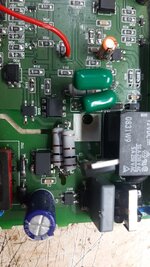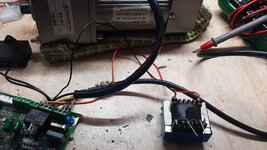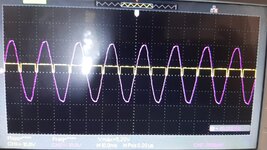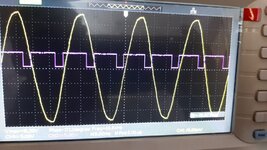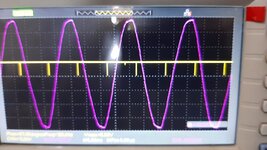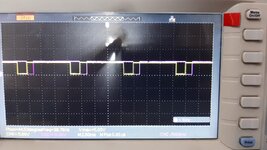gauravkothari23
Advanced Member level 2

Hi all.
I am trying to Control the Speed of 120W AC Motor using controller NUC029LAN, Traic BT136, Zero Detection Circuit.
Have also attached the circuit diagram and some wave form. In the waveform i am triggering the Triac after 7ms delay after zero crossing is detected.
my problem is when incandescent bulb is connected as load, it works perfectly (wave form attached at 7ms of delay).
But when 120W AC motor is connected, i am not able to control the speed, it rotates at full speed only. (Wave form Attached at 7ms of Delay).
The waveform when motor is connected, is completely changed.
Have also attached the waveform of MCU Pin which is driving the Triac with reference of 12V AC, just for reference to confirm that there is no issue with the software part.
Can anybody please let me know where the issue is.
I am trying to Control the Speed of 120W AC Motor using controller NUC029LAN, Traic BT136, Zero Detection Circuit.
Have also attached the circuit diagram and some wave form. In the waveform i am triggering the Triac after 7ms delay after zero crossing is detected.
my problem is when incandescent bulb is connected as load, it works perfectly (wave form attached at 7ms of delay).
But when 120W AC motor is connected, i am not able to control the speed, it rotates at full speed only. (Wave form Attached at 7ms of Delay).
The waveform when motor is connected, is completely changed.
Have also attached the waveform of MCU Pin which is driving the Triac with reference of 12V AC, just for reference to confirm that there is no issue with the software part.
Can anybody please let me know where the issue is.






